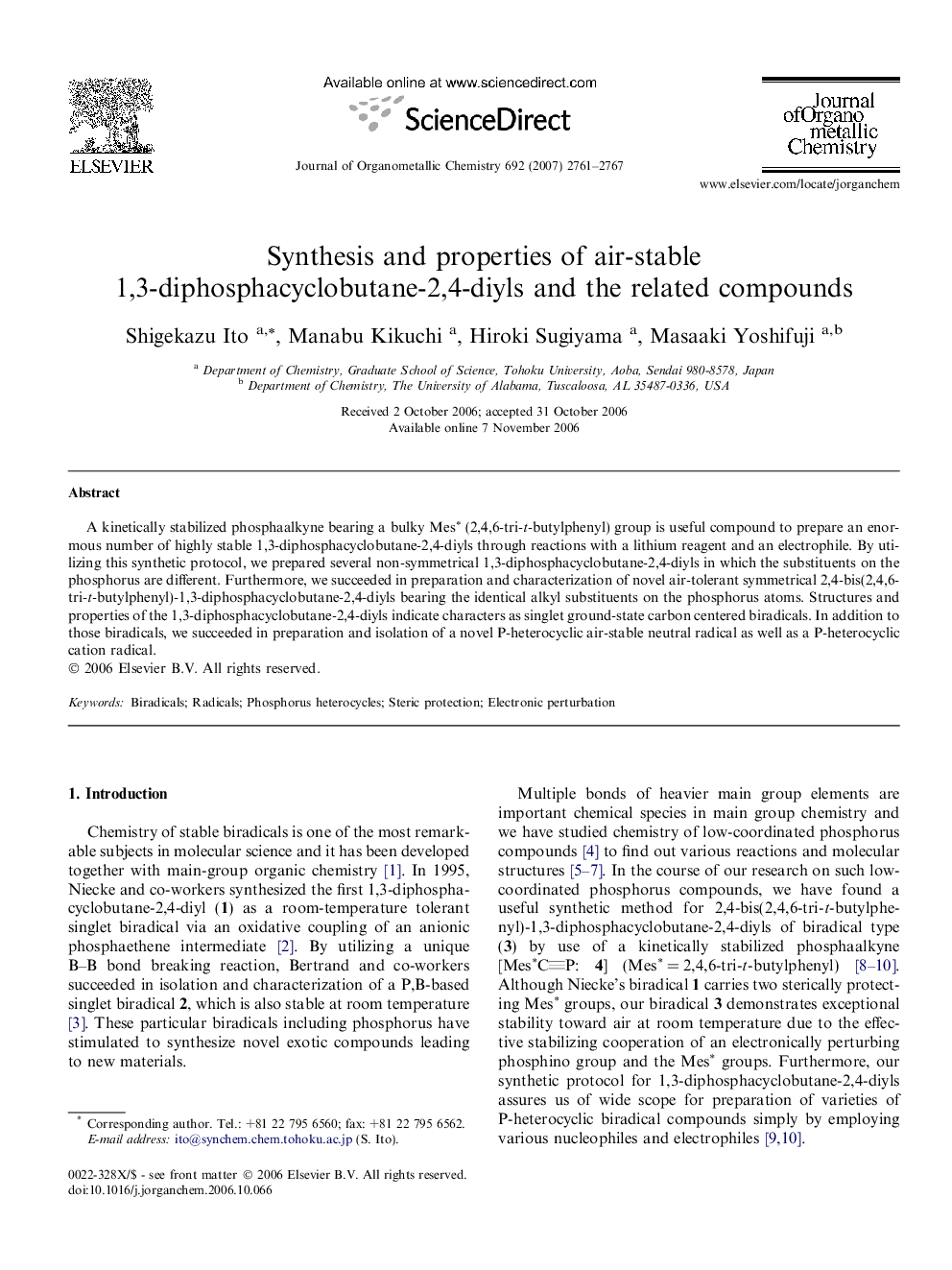| Article ID | Journal | Published Year | Pages | File Type |
|---|---|---|---|---|
| 1325180 | Journal of Organometallic Chemistry | 2007 | 7 Pages |
A kinetically stabilized phosphaalkyne bearing a bulky Mes∗ (2,4,6-tri-t-butylphenyl) group is useful compound to prepare an enormous number of highly stable 1,3-diphosphacyclobutane-2,4-diyls through reactions with a lithium reagent and an electrophile. By utilizing this synthetic protocol, we prepared several non-symmetrical 1,3-diphosphacyclobutane-2,4-diyls in which the substituents on the phosphorus are different. Furthermore, we succeeded in preparation and characterization of novel air-tolerant symmetrical 2,4-bis(2,4,6-tri-t-butylphenyl)-1,3-diphosphacyclobutane-2,4-diyls bearing the identical alkyl substituents on the phosphorus atoms. Structures and properties of the 1,3-diphosphacyclobutane-2,4-diyls indicate characters as singlet ground-state carbon centered biradicals. In addition to those biradicals, we succeeded in preparation and isolation of a novel P-heterocyclic air-stable neutral radical as well as a P-heterocyclic cation radical.
Graphical abstractReactions of a kinetically stabilized phosphaalkyne (Mes∗C P; Mes∗ = 2,4,6-tri-t-butylphenyl) with lithium reagents and electrophiles afford several 1,3-diphosphacyclobutane-2,4-diyls of biradical type (3). Structures and properties of 3 indicate characters as singlet ground-state carbon-centered biradicals. We also succeeded in preparation and isolation of a novel P-heterocyclic air-stable neutral radical (8) and a P-heterocyclic cation radical (9).Figure optionsDownload full-size imageDownload as PowerPoint slide
